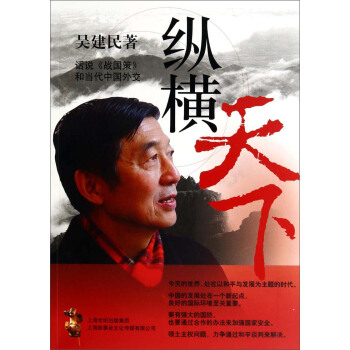![世界政治与国际关系原版影印丛书·学术精品系列·国家间政治:权力斗争与和平(简明版)(英文影印版) [Politics Among Nations:The Struggle for Power and Peace,Brief Edition]](https://pic.windowsfront.com/10970278/46298be6-5af7-4a08-b75f-437f708eec92.jpg)

具体描述
内容简介
《世界政治与国际关系原版影印丛书·学术精品系列·国家间政治:权力斗争与和平(简明版)(英文影印版)》一书明确提出了以权力界定的国家利益概念,并突出阐明了国际政治的现实主义六项原则,全面而系统地阐述了现实主义的国际政治理论,从而奠定了国际政治学的学科地位,并使本书成为国际政治学现实主义流派的奠基之作,也是具有代表性的现实主义国际政治作品,其影响在西方长盛不衰。该书自1948年初版以来已经多次再版,在我国已经有三个译本流传,哺育了几代学人。此简明版原版经过作者的学生和研究助理、也是著名的国际关系理论家肯尼思·汤普森的整理,旨在为相关专业学生提供学习参考,是非常适用的教学参考书。作者简介
汉斯·摩根索( Hans J.Morgenthau),1904年生于德国,1923-1927年间先后在柏林大学、法兰克福大学和慕尼黑大学主攻法律。后在法兰克福从事法律实践和教学。1937年移居美国,曾任教于纽约布鲁克林学院、堪萨斯城市大学,1943年进入芝加哥大学,成为政治学系副教授、教授,也曾担任法兰克福社会研究所纽约新所的政治科学教授等,并且曾是哥伦比亚大学、哈佛大学、耶鲁大学和加州大学的访问教授。1950-1968年期间担任芝加哥大学美国对外政策研究中心主任,期间还兼任美国国务院和国防部顾问。除本书外,摩根索的主要著作还有:《国际政治的原则和问题》(1951年)、《捍卫国家利益》(1951年)、《美国政治的目标》( 1962年)、《政治的困境》(1958年)、《真理与权力》(1970年)等。肯尼思·汤普森( Kenneth WThompson),美国弗吉尼亚大学威尔逊政府管理和外交事务学院教授,创立并领导了弗吉尼亚大学米勒公共事务研究中心。他曾是汉斯·摩根索的学生和研究助理,主要著作有:《国际思想大师》(1980年)、《国际思想之父》(1994年)、《国际关系中的思想流派》(1996年)以及《政治与外交中的传统和价值观》(1992年)、《政治现实主义与世界政治危机》(1960年)。内页插图
精彩书评
不论国际政治的最终目的是什么,权力始终是其直接目标。为权力而斗争在时空中无处不在,是一个不可否认的经验事实。——汉斯·摩根索《国家间政治》
从广泛的知识意义上而言,摩根索打下了国际政治的基础。
——肯尼思·汤普森(《政治现实主义与世界政治危机》)
迄今为止,在流派林立的西方政治理论界,恐怕还没有一部论著的影响能够超过摩根索的《国家间政治》……在40年时间里,摩根索的理论在西方长盛不衰。
——王缉思(摘自《国家间政治》1990年中译本序)
汉斯·摩根索……是美国国际政治学界大师,他的主要著作《国家间政治》被认为是使国际政治学成为一门独立的、系统化的社会科学门类的关键作品。在他以后,国际政治学的发展又经历了好些个阶段,学者们又有不少新的贡献和跨越,但没有一个阶段和一个学者能够在实现自己的进步时完全无视摩要索的工作,他们是“站在巨人的肩膀上”完成这种跨越的。
(该书)也是一部系统的教科书,里面涉及到古典政治学的基本原理、它们在国际关系中的运用、国际体系的概念和外交的基本原则、欧洲近代国家间体系的历史和国际史学家对它们的总结;这本书像是一部国际政治的“小百科全书”,不论你是否赞成作者的具体结论,通过阅读你总能够对国际政治学家研究的主要对象和基本范围有一个总体的了解,包括国际政治学特有的范畴、术语和常识等。
——王逸舟(《西方国际政治学:历史和理论》)
目录
Preface to the Brief EditionPreface to the Sixth Edition
PART ONE
Theory and Practice of International Polttics
1 A Reajist Tbeory of lnternational Politics
SIX PRINCIPLES OF POLITICAL REALISM
2 The Science of International Politics
UNDERSTANDINC INTERNATIONAL POLITICS
Different Approaches
Limitations to Understanding
UNDERSTANDING THE PROBLEM OF INTERNATIONAL PEACE
PART TWO
In,tern,ation,al Politics as a Struggle for Power
3 Political Power
WHAT IS POLITICAL POWER?
As Means to the Nation's Ends
Its Nature: Four Distinctions
THE DEP:RECIATION OF POLITICAL POWER
TWO ROOTS OF THE DEPRECIATION OF POLITICAL POWER
Nineteenth-Century Philosophy
The American Experience
THE SCIENCE OF PEACE: CONTEMPORARY UTOPIANISM
4 The Struggle for Power: Policy of the Status Quo
5 The Struggle for Power: Imperialism
WHAT IMPERIALISM IS NOT
ECONOMIC THEORIES OF IMPERIALISM
The Marxist, Liberal, and "Devil" Theories of Imperialism
Criticism of These Theories
DIFFERENT TYPES OF IMPERIALISM
Three Inducements to Imperialism
Victorious War
Lost War
Weakness
Three Goals of Imperialism
World E'mpire
Continental Empire
Local Preponderance
Three Methods of Imperialism
Military Imperialism
Economic Imperialism
Cultural Imperialism
HOW TO DETECT AND COUNTER AN IMPERIALISTIC POLICY
The Problem of Policy: Containment, Appeasement, Fear
The Problem of Detection
6 The Struggle for Power: Policy of Prestige
DIPLOMATIC CEREMONIAL
DISPLAY OF MILITARY FORCE
TWO OBJECTIVES OF THE POLICY OF PRESTIGE
THREE CORRUPTIONS OF THE POLICY OF PRESTIGE
7 The Ideological Element in International Policies
THE NATURE OF POLITICAL IDEOLOGIES
TYPICAL IDEOLOGIES OF FOREIGN POLICIES
ideologies of the Status Quo
Ideologies of Imperialism
Ambiguous Ideologies
THE PROBLEM OF RECOGNITION
PART THREE
National Power
8 The Essence of National Power
WHAT IS NATIONAL POWER?
ROOTS OF MODERN NATIONALISM
Retreat from Nationalism: Apparent and Real
Personal Insecurity and Social Disintegration
9 Elements of National Power
GEOGRAPHY
NATURAL RESOURCES
Food
Raw Materials
The Power of Oil
……
PART FOUR
Limitations of National Power: The Balance of Power
PART FIYE
Limitations of National Power: International Morality and World Public Opinion
PART SIX
Limitations of National Power: International Law
PART SEVEN
International Politics in the Con,temporary World
PART EIGHT
The Problem of Peace: Peace through Limitation,
PART NINE
The Problem of Peace: Peace through Tran,sformation
PART TEN
The Problem of Peace: Peace through Accommodation,
Historical Glossary
Index
精彩书摘
Since size of population is one of the factors upon which national powerrests, and since the power of one nation is always relative to the power of others, the relative size of the population of countries competing for power and,especially, the relative rate of their growth deserve careful attention. A countryinferior in size of population to its competitor will view with alarm a decliningrate of growth if the population of its competitor tends to increase more rapidly.Such has been the situation of France with regard to Germany between 1870and 1940. During that period, the population of France increased by fourmillion, whereas Germany registered a gain of twenty-seven million. While in1800 every seventh European was a Frenchman, in 1930 only every thirteenthwas a Frenchman. In 1940, Cermany had at its disposal about fifteen millionmen fit for military service, whereas France had only five million.On the other hand, ever since the unification in 1870, Germany has viewed some times with alarm, and always with respect, the Russian population figures,which show a greater rate of increase than Germany's. Looking at the situationas it existed at the outbreak of the First World War solely from the point of view of population trends, Cernlany could feel that time was on Russia's side, and France could feel that time was on the side of Germany, while both Austria and Russia, for other reasons already alluded to, could believe that postponement of the conflict would favor the opponent. Thus all the protagonists, with the excephon of Great Britain, had reasons of their own to prefer a war in 1914 to a peaceful settlement which they could not regard as definite, but only as a breathing spell before the unavoidable settling of a ccounts.As the shifts in the distribution of power within Europe in recent history have been roughly duplicated by the changes in population trends, so the emergence of the United States as the great power center of the West, taking the place of Western and Central Europe, can be read in the population figures of the respective countries. In 1870, the population of France as well as of Germany exceeded that of the United States. Yet,in 1940, the population of the United States had increased by 100 million while the combined increase in the populations of France and Germany in the same period amounted to only thirty-one million.It is thus obvious that a nation cannot be the first rank without a populationsufficiently large to create and apply the material implements of nationalpower. On the other hand, it has become obvious only in recent times that alarge population can also exert a drastically negative influence upon nationaJpower. This has happened in so-called underdeveloped nations, such as Indiaand Egypt, whose populations have greatly increased, by virtue of a decrease in the mortality rates,while their food supply did not keep pace with the increase in population,These countrie were continually faced with the therat of famine and with the need to take care of large masses of undernourished and diseased people ,They had to divert scarce resources from the development of their national power to the feeding and cart of ftheir populations,The largeness of their population ,far from being an asset for their national power,is anobstacle to its develppment,For such nations,to bring the number of ther population into harmony with their resources is a necessity ,and if resources population in to its development,For such nations,to bring the number of their cannot be increased,population control is a precondition of national power,,Trends It is obvious from what has been said thus far that in trying to assess the future distribution of power the prediction of population trends plays an important role.……
前言/序言
用户评价
这本书的装帧设计,虽然简洁,但却有一种历经时间沉淀的厚重感。封面上“学术精品系列”的字样,也预示着其内容的深度和学术价值。我之所以选择这本书,很大程度上是因为其“原版影印”的特性。我一直认为,对于像国际政治这样高度依赖理论构建的学科,直接阅读作者的原著,能够更好地理解其思想的脉络和论证的精妙之处,避免翻译过程中可能出现的理解偏差。书名“国家间政治:权力斗争与和平”更是直击我内心最深处的疑问。在充斥着冲突与合作的国际舞台上,权力究竟扮演着怎样的角色?而和平,又是否仅仅是暂时的休战,抑或是一种可以追求和实现的常态?我期待在这本书的篇幅中,能够看到作者对这些根本性问题的深刻剖析。简明版的设定,也让我对其内容有了更明确的预期——它应该是一部能够快速帮助读者掌握核心理论、理解关键概念的入门级或进阶读物,而非包罗万象的百科全书。我希望通过这本书,能够建立起一个关于国际政治的基本认知框架。
评分拿到这本《政治 among nations》的简明版,我最大的感受是它的“言简意赅”。封面上“简明版”三个字就已经预示了其特点,而内容也确实如此。这本书没有像一些学术巨著那样铺陈大量案例和细节,而是直击核心概念,将复杂的国际政治理论提炼成最精炼的表述。对于我这样时间有限但又想快速掌握一门学科精髓的读者来说,这无疑是一次福音。我特别欣赏作者在梳理权力概念时的条理清晰,他并没有将权力简单化,而是从不同的维度进行了剖析,让我对国家之间“斗争”的理解更加 nuanced。书中的论述虽然简洁,却充满了洞察力,常常能一语道破一些普遍存在的现象背后的逻辑。我尤其关注书中关于“和平”的讨论,因为在纷繁复杂的国际冲突面前,如何寻求可持续的和平,一直是我思考的重点。这本书的简明版,我相信能够为我提供一个清晰的理论框架,帮助我理解不同理论流派对和平的不同解读,以及它们在现实世界中的应用与局限。读完这本书,我希望能够对国际政治的“大图景”有一个更清晰的认识,而不是被琐碎的新闻事件所淹没。
评分当我翻开这本书,厚实且略带复古质感的纸张,以及清晰的印刷字体,立刻营造出一种严肃而庄重的阅读氛围。我尤其看重“原版影印”这一信息,它意味着我能够直接接触到作者最原始的思想表达,避免了翻译过程中可能产生的误差和润色,从而更准确地把握作者的精髓。书名《Politics Among Nations: The Struggle for Power and Peace, Brief Edition》本身就极具吸引力。“权力斗争”与“和平”这两个词汇,构成了国际政治最核心的张力,也是我一直以来着迷的研究方向。我期待在这本书中,能够深入理解国家之间权力运作的内在逻辑,以及在复杂的权力格局下,和平的达成和维持是如何可能的,或者说,为何如此困难。简明版的形式,也让我对阅读体验有了积极的预期,它应该会更侧重于提炼核心理论和关键概念,帮助我快速构建起对这一复杂领域的理解框架,而非陷入过于庞杂的细节之中。我希望通过阅读此书,能够提升自己对国际政治现象的洞察力,并对未来世界格局的演变有更深刻的理解。
评分这本书的封面设计相当朴实,黑白为主,没有花哨的插图,仅以书名和作者信息作为主体,散发着一种沉甸甸的学术气息。当我拿到这本书时,首先映入眼帘的是那厚实的纸张和清晰的字体,即便它是影印版,也丝毫没有影响阅读体验。翻开书页,一股淡淡的书香扑鼻而来,这大概是实体书独有的魅力吧。我一直对国际关系领域充满好奇,尤其是那些关于国家间博弈、权力分配以及如何寻求和平的理论。这本书的书名本身就极具吸引力,“权力斗争与和平”这两个词汇,似乎概括了国际政治中最核心也最矛盾的两极。我迫不及待地想深入其中,去了解那些影响世界格局的深层逻辑,那些隐藏在国家行为背后的驱动力。我对原版影印的处理也相当满意,忠实还原了作者的原文风格,这对于理解作者的原意至关重要。尽管语言是英文,但考虑到它是学术精品系列,其内容必然是经过严格筛选和推敲的,我相信这会是一次深入的学习体验,而不是简单的知识堆砌。我期待着能够在这本书中找到解答我对当前世界一些疑问的线索,比如大国竞争的本质,以及在日益复杂的地缘政治环境中,和平的可能性究竟有多大。
评分作为一名对国际关系研究充满热情的学生,拿到这本《Politics Among Nations: The Struggle for Power and Peace, Brief Edition》着实让我兴奋。英文原版影印,这本身就意味着原汁原味的思想呈现,没有翻译的损耗,能够最大程度地贴近作者的思考。我一直认为,要理解一个领域的精髓,必须直接接触其最经典的学术著作。这本书的标题,“权力斗争与和平”,直接点明了国际政治的核心议题,也是我长期以来所关注的焦点。我期待在这本书中,能够看到作者如何将抽象的理论与现实的国际政治现象相结合,如何阐释国家行为的逻辑,以及在权力博弈的阴影下,和平的实现究竟有多么不易。简明版的定位,让我相信这本书在保持学术严谨性的同时,也会更加注重逻辑的连贯性和论证的效率,避免冗余,直指核心。我希望通过阅读这本书,能够系统地梳理国际政治学的基本理论,掌握分析国际事件的视角和工具,从而提升自己对当前国际格局的理解能力,并对未来国际政治的发展趋势做出更具建设性的判断。
评分可以说还不错的。是影印本嘛!
评分主观性,不一定第一时间就能懂,但一定慢读中会有更强收获。
评分朋友推荐的,据说是大拿写的必备书,可惜买成了简明版……
评分读了几页便觉得很有感觉 不错
评分学习一下原版书,可以同时学习思想理论和专业英语。
评分读了几页便觉得很有感觉 不错
评分This book has been described as a world-class masterpiece and indeed fascinating like so. Once I open this book, I just can’t put it down. Thus I recommend this book for all of you, my dear friends.
评分Love reading, love Jing Dong!
评分学习一下原版书,可以同时学习思想理论和专业英语。
相关图书
本站所有内容均为互联网搜索引擎提供的公开搜索信息,本站不存储任何数据与内容,任何内容与数据均与本站无关,如有需要请联系相关搜索引擎包括但不限于百度,google,bing,sogou 等
© 2025 book.coffeedeals.club All Rights Reserved. 静流书站 版权所有


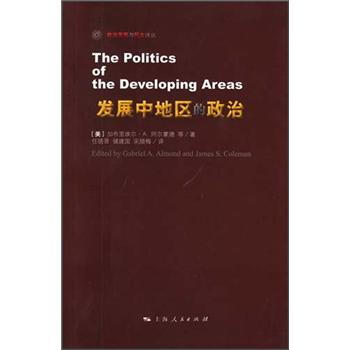
![帝国的终结 [Day of Empire] pdf epub mobi 电子书 下载](https://pic.windowsfront.com/11070784/rBEHZVBPJW4IAAAAAAA222lTYkAAABI2QEwF0IAADbz831.jpg)
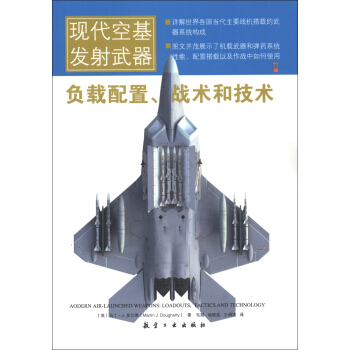
![外教社英汉·汉英百科词汇手册系列:英汉·汉英政治学词汇手册 [An English-Chinese Chinese-English Glossary of Politics] pdf epub mobi 电子书 下载](https://pic.windowsfront.com/11191051/rBEQWFFKiuUIAAAAAAqHQgysrVkAACiCAKewBcACoda718.jpg)
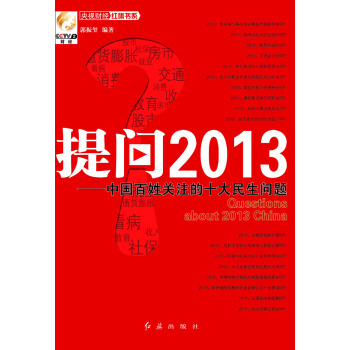


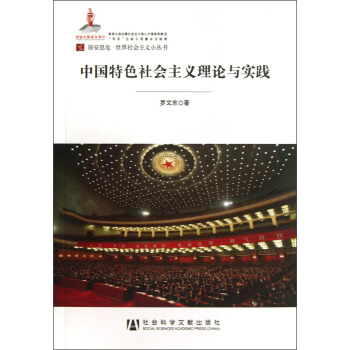
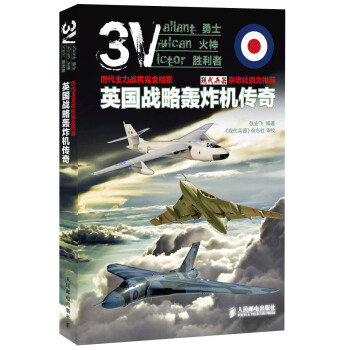

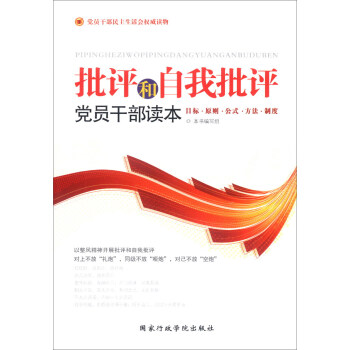
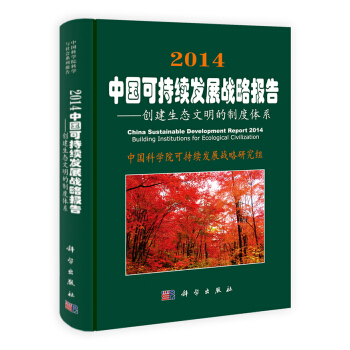
![当代西方政党研究译丛:西方民主国家的政党 [Pofitical Parties In Western Democracies] pdf epub mobi 电子书 下载](https://pic.windowsfront.com/11426848/rBEQYFM6BosIAAAAAAFWzU4Qv9UAADnOQE9kXAAAVbl651.jpg)

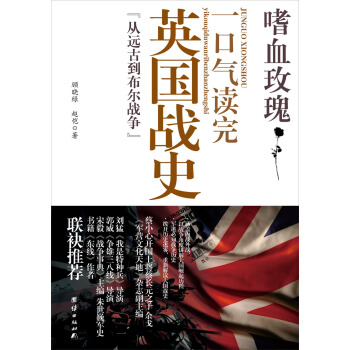
![新时期领导干部意识形态能力建设 [Ideological Capacity Construction of Leading Cadres in New Era] pdf epub mobi 电子书 下载](https://pic.windowsfront.com/11451748/rBEhU1NfBYQIAAAAAAVrRgp9E88AAMm9wFJg5EABWte478.jpg)
![小国与国际关系 [Small State and International Rclations] pdf epub mobi 电子书 下载](https://pic.windowsfront.com/11497120/53bf3652N6f6f98b2.jpg)
